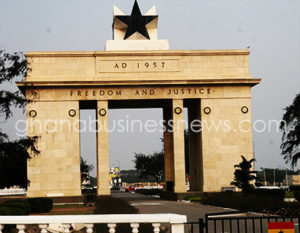Ghana’s relations with Cote d’lvoire set to blossom
 The bilateral relations between Ghana and Cote d’Ivoire is expected to be strengthened despite the recent maritime dispute pending at the International Maritime Tribunal.
The bilateral relations between Ghana and Cote d’Ivoire is expected to be strengthened despite the recent maritime dispute pending at the International Maritime Tribunal.
The invitation of President Alassane Dramane Ouattara, the President of Cote d’Ivoire, as the Special Guest of Honour at the investiture of the President-elect, Nana Addo Dankwa Akufo-Addo has been invariably noted as ” laudable” by some citizens the Ghana News Agency talked to.
“The Ivorians are our brothers and we love them so we’re happy that their President is our special guest, our differences over the border should not strain our relations at all,” said Kwasi Takyi, a librarian.
The ceremony, would be held at the Black Star Square on Saturday, January 7, would be attended 10 other Heads of State.
President Ouattara has been President of Ghana’s Western neighbour since December 4, 2010.
Born on January 1, 1942, the legendary economist worked for the International Monetary Fund (IMF) and the Central Bank of West African States.
President Ouattara was the Prime Minister of Côte d’Ivoire from November 1990 to December 1993, appointed to that position by Former President Félix Houphouët-Boigny.
Ghana’s bilateral relations with Ivory Coast dates back to the early1960s during the First Republic under Osagyefo Dr Kwame Nkrumah.
Despite occasional disagreements over border and security issues, the two countries have enjoyed a high level of cooperation in the areas of Trade, Communications and Transportation.
Cote d’Ivoire gained independence on 7th August, 1960 from France, their colonial masters. Yamoussoukro has been the official capital since 1983, and Abidjan remains the commercial and administrative capital.
According to information gathered from the CIA World Facts Book and the United Nations, Cote d’Ivoire has a population of 23,740,424 with various ethnic groups comprising Akan 32.1%, Voltaique or Gur 15%, Northern Mande 12.4%, Krou 9.8%, Southern Mande 9%, others 21.2% (this includes European and Lebanese descent), unspecified 0.5%.
The Elephant is the national symbol, with national colours being Orange, White and Green.
French is the official language, while there are 60 native dialects of which Dioula is the most widely spoken.
It has a total land area of 322,463 square kilometres (Sq/Km) with 318,003 Sq/km being land and 4,460 Sq/km water.
It shares boundaries with also Burkina Faso, Guinea, Liberia, Mali and the Gulf of Guinea.
The population of the country in terms of their religious inclination indicates that 40.2% are Muslims, Catholics 19.4%, Evangelicals 19.3%, and Methodists 2.5%. Other Christians are 4.5%, with animists or non-religious being 12.8%, while the unspecified religions consist 1.4%.
Following its independence in 1960, Cote d’Ivoire’s stability and the blossoming of its labour-intensive cocoa and coffee industries in the Southwest made it an attractive destination for migrants from other parts of the continent particularly its neighbours.
Houphouet-Boigny, the First President, continued the French Colonial Policy of encouraging labour immigration by offering liberal land ownership laws. Foreigners from West Africa, Europe (mainly France), and Lebanon were about 25% of the population by 1998.
Cote d’Ivoire is heavily dependent on agriculture and related activities, which engage roughly two-thirds of the population. It is the world’s largest producer and exporter of cocoa beans and a significant producer and exporter of coffee and palm oil.
Consequently, the economy is highly sensitive to fluctuations in international prices for these products and in climatic conditions. Cocoa, oil, and coffee are the country’s top export revenue earners, but there is also gold mining.
Following the end of more than a decade of civil conflict in 2011, Cote d’Ivoire has experienced a boom in foreign investments and economic growth.
In June 2012, the International Monetary Fund and the World Bank announced $4.4 billion in debt relief for Cote d’Ivoire under the Highly Indebted Poor Countries Initiative.
According to date sourced from un.org the country’s Gross Domestic Product in 2014 was $34254, while the GDP growth rate was 8.5 per cent. The per capita income for the year was $1546.
Source: GNA
